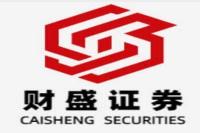Unlocking China's Economic Potential: A Deep Dive into the Central Economic Work Conference
Meta Description: China's Central Economic Work Conference 2023: Deep analysis of key reforms including unified market, state-owned enterprise reform, private sector boost, and capital market improvements. Expert insights and future implications for economic growth. #UnifiedMarket #ChinaEconomy #EconomicReform #StateOwnedEnterprises #PrivateSector
The recent Central Economic Work Conference (CEWC) in Beijing painted a vibrant picture of China's economic future, outlining bold strategies to unleash unprecedented growth. Forget dry economic jargon; this isn't just another news report. This is a detailed look behind the headlines, offering an expert's perspective on the sweeping reforms announced, their potential impact, and the long-term implications for China and the global economy. We'll delve into the nitty-gritty, exploring the nuances of each policy and dissecting what it all really means for businesses, investors, and everyday citizens alike. Imagine a China where market forces are truly unleashed, where innovation thrives, and where economic prosperity reaches every corner of the nation—that's the vision the CEWC is striving to create. Get ready to understand the roadmap, the challenges, and the immense opportunities that lie ahead. This isn't just about numbers; it's about the human stories behind the economic transformation, about the lives that will be touched by these bold initiatives, from the bustling city centers to the quiet villages. Prepare to be captivated by the intricate details, the insightful analyses, and the compelling narrative of China's ambitious economic journey. Buckle up, because it's going to be a fascinating ride!
The Unified Market: A Cornerstone of Reform
The CEWC’s emphasis on building a “unified national market” is arguably the most significant development. This isn't just about removing trade barriers—it's about creating a truly integrated economic space, fostering seamless flow of goods, capital, labor, and information. Think of it as leveling the playing field, allowing businesses of all sizes, from nimble startups to established giants, to compete on a fair and open platform. This move directly addresses regional disparities, fostering growth in less developed areas. But it's not a simple task. Harmonizing diverse regulations, standardizing procedures, and ensuring consistent enforcement across vastly different regions will be a Herculean effort.
The potential benefits, however, are enormous. Imagine a scenario where a small business in rural China can access the same resources and opportunities as one in Shanghai. This fosters innovation, expands markets for businesses, and leads to more efficient allocation of resources. The key to success lies in meticulous planning and effective implementation, ensuring fairness and transparency throughout the process. Any missteps could create new barriers and undermine the grand vision. This is a marathon, not a sprint, and requires sustained effort and commitment from both the government and private sector.
One significant challenge is the need for consistent regulatory frameworks across all provinces. Imagine the frustration of navigating dramatically different rules and regulations across different regions; it creates significant barriers to entry for businesses. The unified market initiative directly tackles this issue, promising a more streamlined and predictable business environment. This will not only attract domestic investment but also significantly enhance China's attractiveness to foreign investors. A predictable and transparent regulatory environment is a cornerstone of economic stability and growth; this initiative is a crucial step in that direction!
State-Owned Enterprises (SOEs) and Private Enterprise: A Symbiotic Relationship?
The CEWC's focus on SOE reform and private sector enhancement is equally crucial. For years, the debate about the role of SOEs in the Chinese economy has been ongoing. This isn't about dismantling SOEs; it's about making them more efficient and competitive. The goal is to leverage their strengths while addressing their weaknesses to enhance their contribution to the national economy. This could involve restructuring, privatization of less strategic assets, and a greater focus on market-oriented decision-making.
Simultaneously, fostering a thriving private sector is vital. Private enterprises are the engines of innovation and job creation in any dynamic economy. The emphasis on implementing the Private Economy Promotion Law signals a clear commitment to leveling the playing field for private businesses. This includes reducing bureaucratic hurdles, enhancing legal protections, and ensuring fair access to resources. The government's commitment to addressing concerns about unfair competition and regulatory burdens is a welcome step towards greater confidence and investment in the private sector.
The key is achieving synergy between SOEs and private enterprises, fostering collaboration rather than competition. Imagine a partnership where SOEs leverage their scale and resources to support private sector innovation, while private enterprises bring agility and market responsiveness. This symbiotic relationship could unlock enormous potential for economic growth.
Regulatory Reform: Striking a Balance
The CEWC's call for a more balanced approach to regulation is particularly noteworthy. Excessive regulation can stifle innovation and economic activity, while lax regulation can lead to instability. The goal is to find the "Goldilocks zone"—just right. This involves streamlining processes, reducing unnecessary bureaucracy, and preventing over-regulation of innovative technologies and industries.
The emphasis on “规范涉企执法专项行动” (specialized campaigns to regulate law enforcement related to businesses) is crucial. This directly addresses concerns about arbitrary enforcement and excessive government intervention, which can disproportionately affect small and medium-sized enterprises (SMEs). A more predictable and transparent regulatory environment is key to attracting investment and fostering entrepreneurial activity. This isn't about deregulation; it's about smart regulation—streamlining processes and improving efficiency without compromising on essential protections.
Capital Market Reform: A Catalyst for Growth
Deepening capital market reform is another key element. China's capital markets have tremendous potential to play a greater role in financing economic growth. This involves improving market mechanisms, enhancing investor protection, and making it easier for companies to access capital. The focus on addressing impediments to long-term capital investment speaks volumes, acknowledging that long-term growth needs long-term investment flows. This includes streamlining regulations and increasing transparency to build confidence among investors.
This is about creating a vibrant, dynamic, and trustworthy capital market. A well-functioning capital market isn't just about facilitating the flow of money; it's about connecting businesses with investors, fostering innovation, and driving economic growth. It's about building confidence, reducing uncertainty, and creating a stable environment for long-term investment.
Fiscal Reform: Empowering Local Governments
The CEWC's emphasis on strengthening local government fiscal independence is crucial. Many local governments face significant financial constraints, hindering their ability to invest in infrastructure and public services. By increasing their fiscal autonomy, they can better address local needs and play a more active role in driving regional economic growth. This is about empowering local governments to become more efficient and responsive to the needs of their communities.
This doesn't mean simply throwing money at the problem; it's about creating a more sustainable and efficient system. This includes exploring innovative financing mechanisms, improving tax collection efficiency, and ensuring transparency and accountability in the use of public funds.
Frequently Asked Questions (FAQs)
Q1: What is the significance of the unified national market initiative?
A1: The unified national market is designed to break down regional barriers and create a truly integrated economic space, fostering free flow of goods, capital, and resources. This will increase competition, enhance efficiency, and promote balanced regional development.
Q2: How will the SOE reforms impact the private sector?
A2: SOE reforms aim to improve efficiency and create a more level playing field for private businesses. This could include restructuring, privatization of non-core assets, and a greater focus on market-oriented decision-making by SOEs, reducing unfair competition.
Q3: What are the challenges in implementing these reforms?
A3: Challenges include harmonizing regulations across different regions, ensuring uniform enforcement, addressing potential resistance to change, and managing potential risks associated with rapid reform.
Q4: How will the capital market reforms benefit investors?
A4: Capital market reforms aim to create a more transparent, efficient, and investor-friendly environment, attracting both domestic and foreign investment. This should lead to better investment opportunities and higher returns.
Q5: What is the role of fiscal reform in regional development?
A5: Fiscal reform aims to enhance the fiscal capacity of local governments, enabling them to invest more effectively in infrastructure and public services, boosting regional economic development.
Q6: What's the overall outlook for the Chinese economy based on these reforms?
A6: The comprehensive reforms outlined by the CEWC point towards a more dynamic, market-oriented, and resilient Chinese economy. While challenges exist, the potential for accelerated growth and improved living standards is significant.
Conclusion: A New Era of Economic Growth
The CEWC's announcements signal a new era of economic reform in China. The ambitious initiatives, while challenging, offer a roadmap toward a more vibrant, efficient, and sustainable economy. The success of these reforms hinges on effective implementation, careful management of risks, and a commitment to creating a truly fair and open market. The journey ahead is undoubtedly complex, but the potential rewards—a more prosperous and equitable China—make it a journey worth undertaking. The focus on a unified market, strengthened private sector, and regulatory balance paints a picture of a China poised for a new era of economic dynamism and global influence. The coming years will be critical in determining how effectively these profound changes are implemented, shaping not just China's future but also the global economic landscape.



